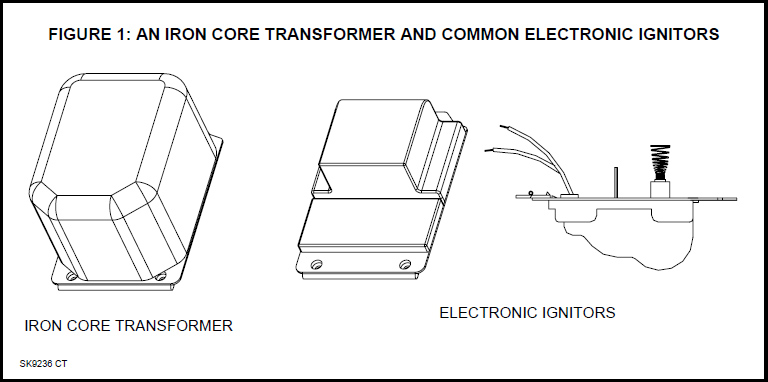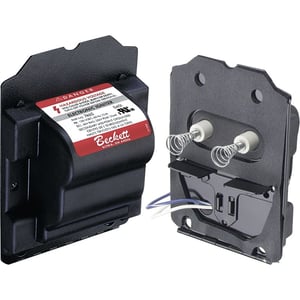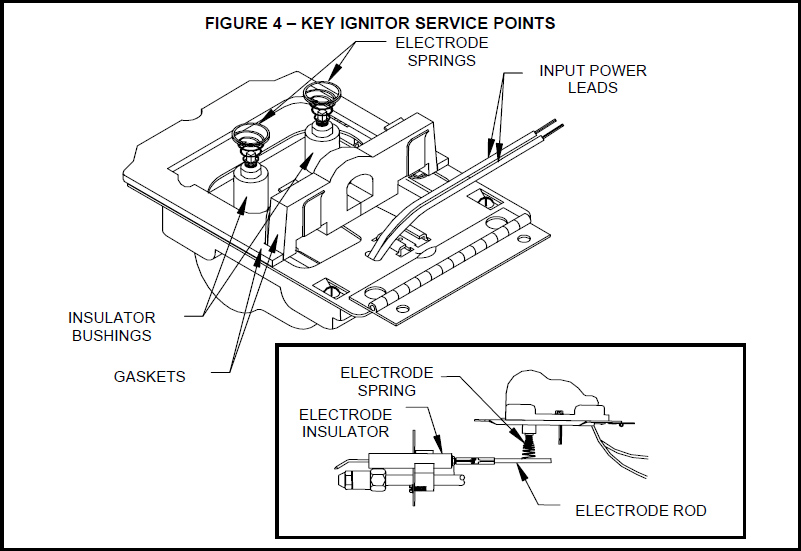Every component in the heating system has a specific purpose and a role to play in generating and regulating heat for delivery to homes and facilities. These components must not only function correctly on their own but also in conjunction with the rest of the heating system in order to produce reliable heat. One particularly important piece of the system that has helped to increase heat reliability over the years is the solid-state, electronic igniter. The purpose of the igniter, overall, is to provide the high voltage spark necessary for fuel ignition. As the system's ignition source, the modern igniter ensures that the rest of the system provides dependable comfort to customers. In this post, we'll provide an introduction to igniters, how they function, and how technicians can service and troubleshoot them.

The Igniter's Role in the Heating System
In order to create the proper arc of energy to ignite heating fuel, we need an ignition source that can create a high enough voltage from the standard voltage supplied to the system. Before igniters were introduced, transformers were the standard ignition source for heating systems, but for efficiency and reliability reasons, the electronic, solid state igniter is much more common today. The igniter is able to change the characteristic of the voltage on the board before it moves from the primary to the secondary coil. Therefore, a voltage drop from the primary input does not affect the output in the event of a voltage drop due to interference or brown-out. Solid state igniters can be used on a variety of appliances as well as the heating system.
Electronic igniters are powered by 120 VAC which their circuitry converts to DC (Direct Current) voltage inside. The DC voltage turns power transistors on and off very quickly, conducting current through the primary coil of its small internal transformer at a frequency of 15,000 to 30,000 Hz. The secondary coil of this special high frequency transformer produces a high voltage ignitor output that has a frequency of 15,000 to 30,000 Hz. Remember: the ability of an igniter to ignite oil depends on more than just high voltage – it depends on arc output current as well! Spark heat energy = voltage x current.
 |
| Click here to learn more about the PowerLight Electronic Oil Igniter from Beckett. |
Servicing Solid-State Igniters
The electronic ignitor does not require extensive maintenance. However, there are areas to consider:
- Similar to the iron core transformer, the electronic ignitor must be kept clean. Prolonged exposure to moisture can cause arc tracking and potential failure to ignite. Wipe dirt and oil from all surfaces.
- Check insulator bushings and make sure they are clean and free from any crazing or cracks. Replace units that show evidence of damage.
- Examine the ignitor input leads for cuts or tears in the insulation. Route the leads securely so that they are not pinched when the ignitor is closed. Make sure the wire nuts are tight and no bare wires are exposed.
- If the ignitor has gasketing, check the sealing surfaces and replace any damaged or deteriorated gaskets. (Use gasket kit No. 51304 for AFG and ADC burners.)
- The secondary electrode springs should be clean, aligned perpendicular to the ignitor base, and should make solid contact with the burner electrode rods when the ignitor is in the closed position. If the springs make poor contact, the ignition performance could be impaired (see Figure 4 insert).
- Perform the following test to check that the ignitor is grounded to the burner. Turn off the power to the burner. Measure resistance with an Ohmmeter between both electrode springs. The resistance reading should be less than 2000 Ohms. Now measure the resistance from one electrode spring and the exposed metal of the burner (for instance, the copper line or a housing bolt). This reading should be 50% of the spring to spring reading, then repeat for the other electrode spring. If either resistance readings are infinite, the ignitor may not be grounded to the burner. Note: This resistance should be the same as the other spring-to-burner resistance, and it should be 1/2 of the spring-to-spring resistance. If the two spring-to-burner resistances differ by more than 20%, the ignitor should be replaced.

Troubleshooting Electronic Igniters
An electronic ignitor is most simply tested by supplying it with 120 V input and observing whether it produces an arc. This may be done by looking or listening to see if there is an arc across the electrodes while the burner is running and the ignitor is energized. The ignitor may be tilted back on its hinge and, when voltage is applied, the blade of a well insulated screwdriver may be placed across the springs to test for an arc.
Remove power from the burner and block the fuel supply to the nozzle line while performing this test.
NOTE: If the burner is equipped with a primary safety control the cad cell will not permit the primary control to energize the ignitor if the cad cell senses light. To perform this test, remove power from the burner, disconnect one lead of the cad cell from the primary control, or remove the cell from its base. DO NOT use transformer testers to test electronic ignitors. Doing so will give you an inaccurate measurement and may harm the ignitor, the tester, or both.
If an ignitor fails, it generally produces no arc at all. However, similar to an iron core transformer, an electronic ignitor can have a weak output arc. To test for this, perform the screwdriver arc test described above. Energize the ignitor and place the blade of the well insulated screwdriver across the springs. Keeping the blade in contact with one of the springs, slowly pull the blade away from the other spring, drawing an arc from the spring to the blade. With a 110 V to 120 V input and no airflow across the arc, the ignitor should be able to maintain an arc with the screwdriver blade at least 5/8″ away from the spring. If the ignitor is not able to sustain a 5/8″ spring-to-spring arc, or if an arc drawn from one spring to the grounded baseplate is weaker than an arc drawn from the other spring to the baseplate, replace the ignitor. See also point 6 above.
Electronic ignitors can produce interference with televisions and radios in two ways. First, if the ignitor is not designed with proper filtering or if it is not well grounded to the appliance and to the building, voltage signals can leak back through the power leads. The power lines radiate this “electronic noise” through the house, interfering with TV or radio antenna signals. Secondly, if the electrodes are not properly adjusted, the strong arc produced by ignitors may jump over to the nozzle or combustion head. This may also produce electronic noise that can be detected by TV or radio antennas.
Iron core transformers can produce interference in the same ways, but usually to a lesser extent. Interference is most likely to occur in locations with old ungrounded “knob and tube” style wiring. Be sure the burner is properly grounded (see above, Service Tip #6), and check that the electrodes are correctly adjusted.
Ignitors utilize potting compounds and plastic materials that resist moisture well. However, excessive temperature is one of the primary causes of premature ignitor failures. Beckett ignitors are designed for a maximum ambient temperature of 150°F. Typically appliances are not subjected to high ambient temperatures, though excessive heat may travel back through the air tube if the heat exchanger is blocked or if there is depressurization of the mechanical room. Another example is if a pressure washer, equipped with an oil burner is installed in a van or enclosed trailer make certain that your customer keeps the doors open. This example is particularly important in the summer and the Southwestern part of the country where ambient temperatures routinely exceed 100°F.


